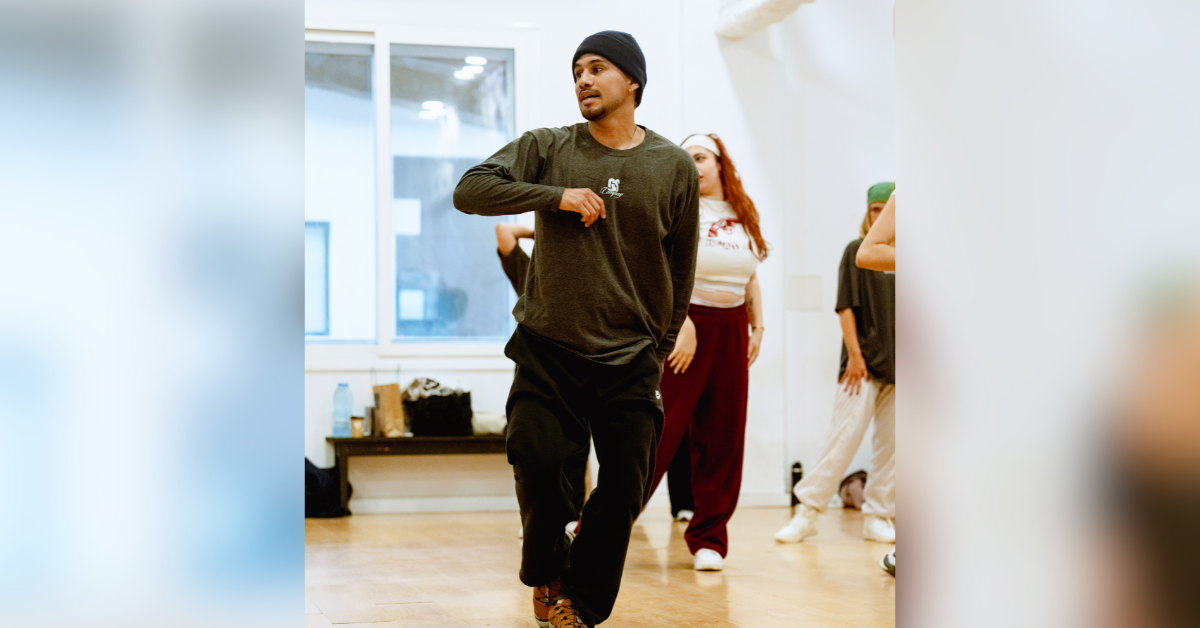From Mexico City to LA: Julio Cesar Soto Renteria's Dance Path

Nov. 5 2025, Published 1:20 a.m. ET
A good rehearsal solves spacing, traffic, and timing before the lights come on. For choreographer and dancer Julio Cesar Soto Renteria, that intention is movement that carries Latin roots into commercial spaces without losing the groove or story. The results make those choices clear. What emerges is a repeatable way of working and a signature that points to growth.
Where the Path Began and Why it Stuck
Growing up in Mexico City gave Renteria years of training before relocating to Los Angeles. He talks about commitment like a craft, shaped by long days and real-world rehearsals. That mix created a focus on musicality, clean footwork, and stage presence, with an emphasis on giving space to Latin rhythm within counts that work for commercial jobs. The result is a dancer who thinks about the room, the camera, and the crowd in equal measure. That training revealed a gap that he was uniquely positioned to fill.
The Problem He Set Out to Solve

Los Angeles has deep talent and fast-moving trend cycles. On that level, Latin movement often shows up as a flavor rather than a foundation. Renteria’s response is practical: combinations that read on stage and video. He builds choreography that respects the source styles while fitting the realities of casting, rehearsal time, and performance length. That balance may help more Latin-forward work land cleanly in commercial contexts, and his portfolio proves the approach works.
Building a Body of Work Across Platforms
His choreography credits cover both performance stages and digital platforms. Renteria’s work includes Thalía's Concierto de Campeones, Amazon Music's The Future is Ours with its Times Square performance, and projects with Ryan Castro and Rich The Kid. Each collaboration demonstrates his skill in using Latin movement vocabulary with various artists and across different production scales while maintaining cultural authenticity. Behind each of these credits is a consistent method.
How the Work Comes Together Each Day

Renteria’s process is organized and repeatable without feeling rigid. A typical build starts with a rhythm map, then sections for travel, accents, and moments that invite connection. He pays attention to where bodies are placed, how groups exchange focus, and when small gestures tell the story better than big shapes. From the first mark to the final chorus, crews know exactly how the piece moves. That clarity extends beyond rehearsal into how he mentors other dancers.
Lessons for the Next Wave
Renteria speaks about choreographing as a service to music and community. That shows up in how he breaks down steps, credits cultural sources, and asks dancers to carry intent from the warm-up to the performance. He prizes timing, breath, and eye line because those details can change how a phrase reads under lights. None of this is a shortcut. It’s careful work that could make performances feel grounded and confident across stages and screens. When those principles come together, the movement itself tells the story.
What the Work Looks Like in Motion

It starts with a tempo, then threads footwork with hips and shoulders. Direction changes arrive as pivots and traveling passes that keep energy moving, with pauses used to reset focus before the next phrase. The result is choreography that could sit comfortably in commercial contexts while remaining true to its Latin roots. This technical, cultural, and collaborative foundation is what is driving what’s next.
What Keeps Him Moving Forward
Renteria blends patience with ambition to achieve his goals. He hopes for bigger platforms, more collaborations, and room to teach widely. And that’s all, while staying true to the values that shaped him. His long game is simple: make work that travels, keep doors open for Latin dancers, and grow opportunities without forgetting where he came from.
He keeps the focus on musicality, clean counts, and presence that reads from rehearsal to show. Pieces are built to travel across rooms and cameras without losing the purpose of his work. That kind of consistency could help the next round of Latin-forward projects land with confidence.


